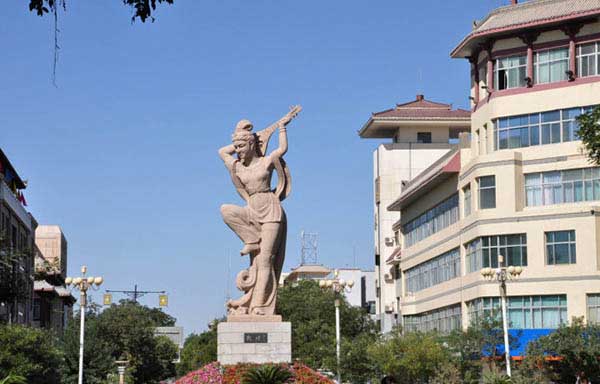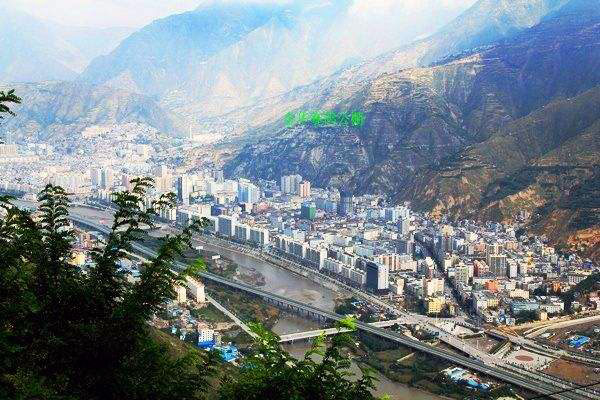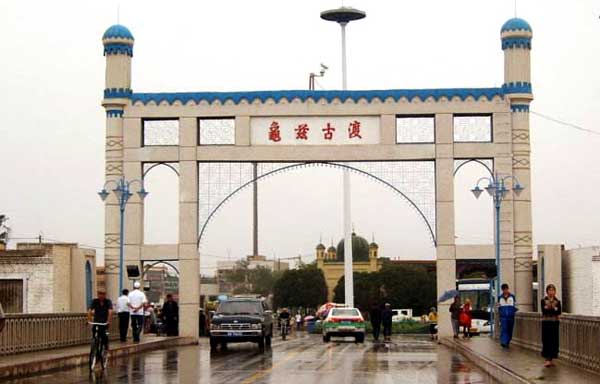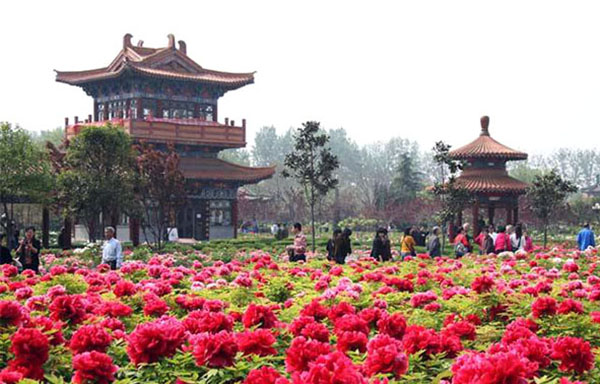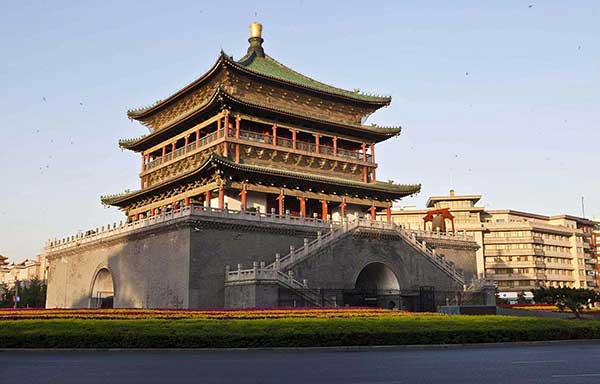- By admin
- In DunhuangKnowledge
- 2017-11-28
Mogao Caves from the national geographic

Stein's cache revealed a multicultural world more vibrant than anyone had imagined. Nearly a dozen languages appeared in the texts, including Sanskrit, Turkic, Tibetan, and even Judeo-Persian, along with Chinese. The used paper on which many sutras had been copied offered startling glimpses into daily life along the Silk Road: a contract for trading slaves, a report on child kidnapping, even a Miss Manners-style apology for drunken behavior. One of the most precious objects was the Diamond Sutra, a 16-foot-long scroll that had been printed from woodblocks in 868, nearly six centuries before Gutenberg's Bible.
Others—French, Russian, Japanese, and Chinese—quickly followed in Stein's path. Then in 1924 came American art historian Langdon Warner, an adventurer who might have served as inspiration for the fictional Indiana Jones. Enthralled by the beauty of the caves—"There was nothing to do but to gasp," he later wrote—Warner nevertheless contributed to their destruction, hacking out a dozen mural fragments and removing an exquisite Tang-era sculpture of a kneeling bodhisattva from Cave 328. The art is still in the careful custody of the Harvard Art Museum. But the defaced murals—and the empty space where the sculpture once knelt—are heartrending all the same.
Some Chinese officials, echoing their counterparts in Egypt and Greece, have called for the Mogao artifacts to be returned. Even the Dunhuang Academy's otherwise dispassionate book on the grottoes has a chapter titled "The Despicable Treasure Hunters." Foreign curators, meanwhile, contend that their museums have saved treasures that might otherwise have been lost forever—destroyed in the wars and revolutions of 20th-century China.
Whatever one's views on the issue, there is an inescapable fact: The scattering of Mogao artifacts to museums on three continents has given rise to a new field of study, Dunhuangology, and today scholars around the world are working to preserve the treasures of the Silk Road.
Fan Jinshi didn't set out to be the guardian of the caves. Back in 1963, when she reported to the Dunhuang Academy, the 23-year-old Shanghai native never imagined she would last a year in the forsaken outpost, much less a lifetime. The Mogao caves were impressive, to be sure, but Fan couldn't bear the food, the lack of running water, or the fact that everything—houses, beds, chairs—seemed to be made out of mud.
Then came the Cultural Revolution in 1966, when Chairman Mao's regime laid waste to Buddhist temples, cultural artifacts, and foreign emblems across China. The Mogao caves were a natural target. Fan's group didn't avoid the ferment; the staff of 48 split into about a dozen revolutionary factions, then spent their days condemning and interrogating each other. But for all the bitter infighting, the factions agreed on one principle: The Mogao caves should not be touched. Says Fan, "We nailed shut all the gates to the grottoes."
Nearly half a century later, Fan is leading a very different sort of cultural revolution. As afternoon sunlight streams into her office at the Dunhuang Academy, the director—a diminutive woman with short salt-and-pepper hair—gestures out the window toward the dun-colored cliff face. "The caves have almost every ailment," she says, rattling off the damage caused by sand, water, soot from fires, salt, insects, sunlight—and tourists. Fan oversees a staff of 500, but she recognized as far back as the 1980s that the academy could use the help of foreign conservationists. This may sound simple, but collaborating with foreigners is a sensitive issue at Chinese cultural heritage sites—and the plunder of the Mogao caves a century ago serves as a powerful cautionary tale.
The sky outside Fan's window, cloudless and eggshell blue for days, suddenly darkens. A sandstorm has kicked up. Fan notices only long enough to remember the first project she undertook with one of the academy's longest serving partners, the Getty Conservation Institute (GCI). To prevent the kind of sand invasion that had buried some of the caves—and damaged paintings—GCI erected angled fences on the dunes above the cliff, reducing wind speeds by half and decreasing encroachment by 60 percent. Today the academy has dispatched bulldozers and workers to plant wide swaths of desert grasses to perform the same job.
The most painstaking efforts occur inside the caves. GCI has also set up monitors for humidity and temperature in the caves and is now measuring the flow of tourists as well. Its biggest project took place in Cave 85, a Tang dynasty grotto where GCI and academy conservationists worked for eight years devising a special grout to reattach mural segments that had separated from the rock face.
Related destinations
Why Choose Us?
We are the top Silk Road tour operator based in Dunhuang, China. We focus on providing well designed Silk Road China Tours with resonable price and thoughtful service.
- Easy & carefree booking
- The best value
- Great travel experience
- Locally operated
Hot Tours
-

6 days Gansu tour to Binglingsi, Xiahe and Langmusi
Tour type : Private tour Price : from *** Destinations : Lanzhou - linxia - Xiahe - Langmusi - Hezuo - Lanzhou -

12 Days Gansu Highlights Tour
Tour type : Private tour Price : from *** Destinations : Xian – Tianshui – Lanzhou – Xiahe – Langmusi – Hezuo – Zhangye – Jiayuguan - Dunhuang -

10 Days Silk Road Classic Tour
Tour type : Private tour Price : from *** Destinations : Xian - Zhangye - Jiayuguan - Dunhuang - Turpan - Urumqi -

5 Days Zhangye - Alxa youqi Highlights Tour
Tour type : Private Tour Price : from *** Destinations : Zhangye - Alax youqi - Zhangye

